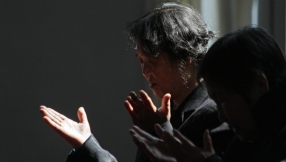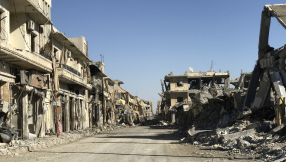Ecuador volcano spurts molten rock, hundreds flee
The volcano, called Tungurahua in the native Quichua language, is 80 miles (130 km) south of the capital, Quito. It last erupted in August 2006 and has been rumbling and belching rock, gas and ash since January.
Clad in ponchos and rubber boots, farmers who for months have defied Tungurahua to tend crops and livestock clambered into pick-up trucks and fled hamlets on the slopes of the 16,460-foot (5,020-metre) volcano, which exploded noisily overnight.
"We couldn't stand the racket," said Luis Penafiel, a 35-year-old peasant who fled his hamlet to seek safe haven in a shelter in nearby Pelileo.
"The children were scared and yelling a lot. The women were also scared to death so we decided to get out of there."
Police and troops wearing face masks patrolled deserted hamlets, while peasants huddled in churches and schools serving as make-shift shelters.
"It was a really big shake coming from the volcano and that forced civil defense to evacuate the population," said civil defense chief Roberto Rodriguez. More than 1,200 people have left their homes.
Juan Salazar, the mayor of Penipe, a municipality near the volcano, said on Wednesday that the Tungurahua sounded like "an old airplane turbine."
No reports of injuries or deaths were reported, but local authorities said ash and rock fragments showered hamlets located near the crater.
In 2006, streams of fast-moving molten rock enveloped several hamlets tucked in the volcano's folds, killing at least four people and forcing thousands to evacuate and lose their corn and potato crops.
Classes were canceled and roads closed in the area around the mountain on Wednesday. Nearby provinces braced for ash fall as the volcano billowed a 6-mile-long (10-km-long) smoke column.
Officials did not evacuate the nearby Banos hot springs, a popular destination for foreign tourists, but volcano experts said they had not ruled out that streams of fiery rock could reach the town.
In 1999, 17,000 people were forced to evacuate the town of Banos after loud explosions and hot gas blew from the volcano.
President Rafael Correa said the government will extend an emergency decree to quickly release more funds to help evacuees, pay for shelters and repay roads and bridges.
Volcanologists expect still stronger activity from Tungurahua, which is in the middle of an eruption cycle that began in 1999.
"This is an ongoing eruption and we still don't know the magnitude it could reach," said Hugo Yepes, the head of the country's Geophysics Institute.













